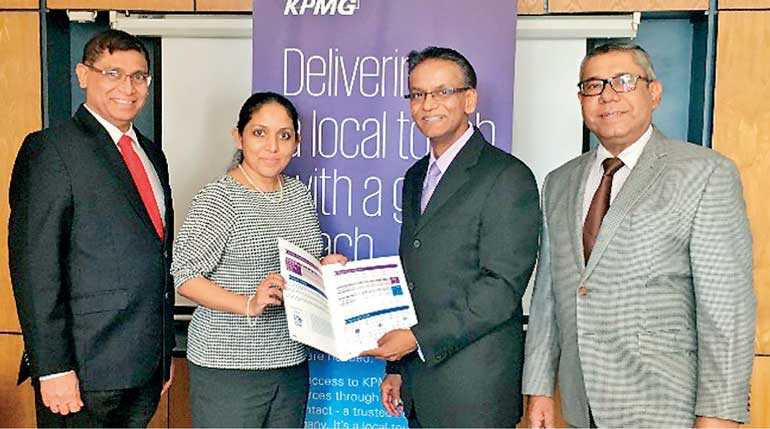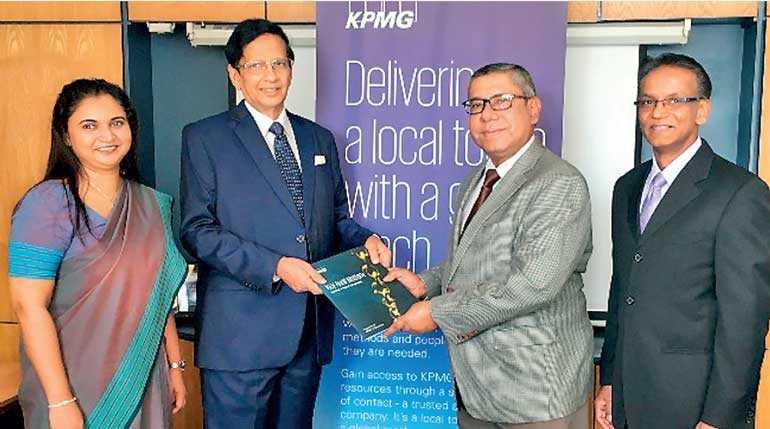Friday Dec 19, 2025
Friday Dec 19, 2025
Tuesday, 17 September 2019 00:00 - - {{hitsCtrl.values.hits}}

Institute of Chartered Accountants of Sri Lanka President and KPMG Sri Lanka Partner Jagath Perera (left) and Institute of Chartered Accountants of Sri Lanka Chief Executive Officer Dulani Fernando (centre left) being presented the report by KPMG Sri Lanka Head of Audit Suren Rajakarier (centre right) and KPMG Sri Lanka Managing Partner Reyaz Mihular (right)

Chief Executive Officer Chaminda De Silva (left) and Sri Lanka Institute of Directors Chairman A. R. Rasiah (centre left) and being presented the report by KPMG Sri Lanka Managing Partner Reyaz Mihular (centre right) and KPMG Sri Lanka Head of Audit Suren Rajakarier (right)
The auditor’s report is the key tangible deliverable of the audit process. While the auditor’s opinion on the financial statements is valued, many users require the auditor’s report to be more informative and relevant. The International Board acknowledged the importance of achieving better transparency and established in the new standard the communication of Key Audit Matters referred to as KAMs. This allows for auditor judgment to ensure that the key audit matters communicated in the auditor’s report are as entity-specific and relevant as possible.
As the principal communication between the auditor and users of audited financial statements, the new auditor’s report is intended to be more informative and transparent. The KPMG report: Key Audit Matters was released on Friday 6 September at the KPMG Learning Centre in Colombo. The purpose of this publication is to provide a snapshot of the Sri Lankan experience in the first year of reporting of Key Audit Matters (KAMs).
The report includes an analysis of the KAMs, qualifications, and emphasises the matter and material uncertainty relating to going concern included in the 280 annual reports of listed entities. The report provides valuable facts on sector and subcategories of KAMs reported.
KPMG Sri Lanka Head of Audit Suren Rajakarier noted, “KAMs enhance the communicative value of the auditor’s report by providing transparency of the audit.” However, he goes on to say, “In order to provide better insight on the conduct of the audit, the audit reports may have to be more granular and KAMs should show a linkage of the impact on the entity arising from wider macro-economic factors.”
Additionally, in the Sri Lankan context, a couple of concerns noted are the low number of KAMs in large diversified business groups and KAMs being inadequately granular with brief narratives. This approach may not meet the objective of transparency and being informative.
The report therefore emphasises the auditor’s commitment towards transparency and to provide shareholders a view behind the boardroom discussions on important audit issues between the audit partner and those charged with governance, to enhance and add value to the auditor’s deliverables.
The KAM report can now be accessed through www.home/kpmg/sl.